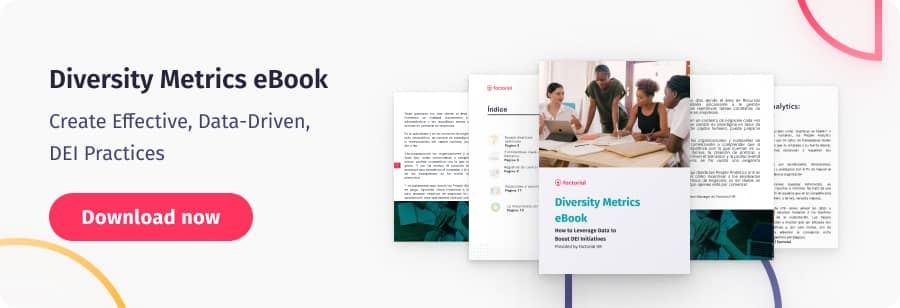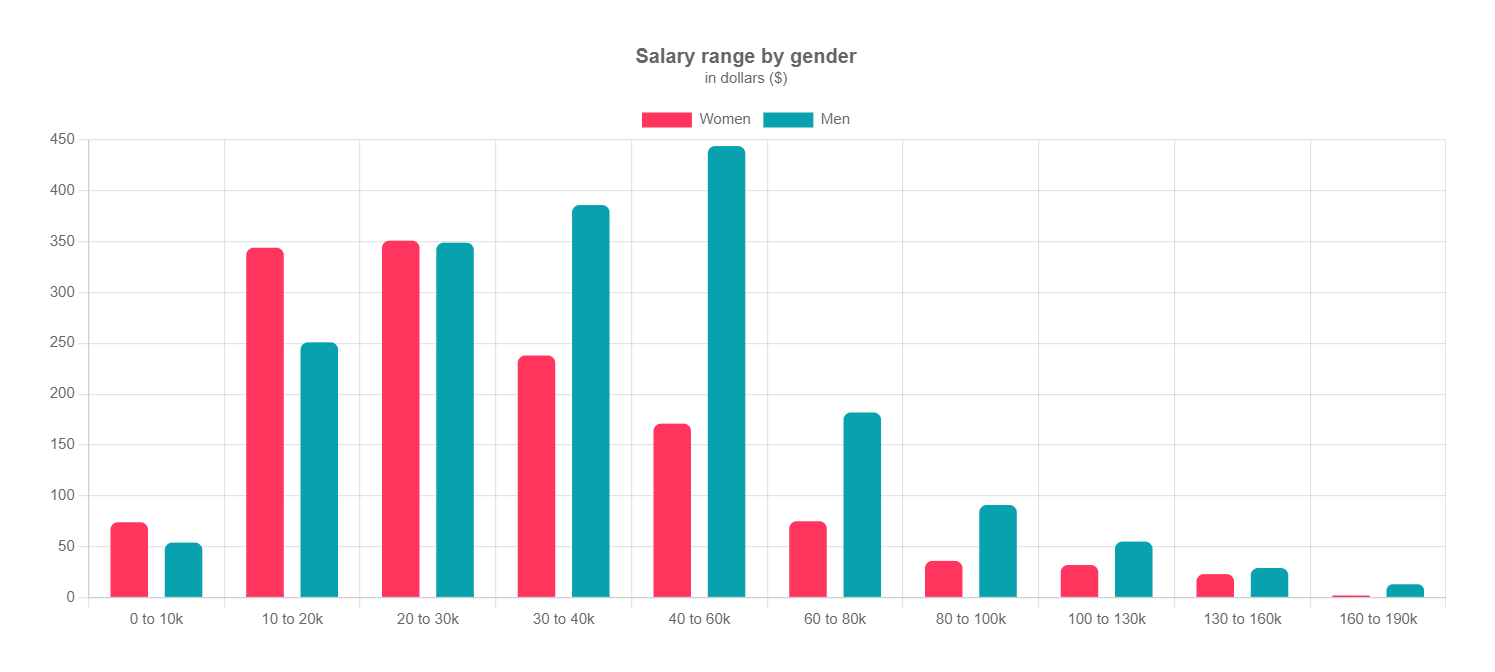According to the EEOC, hiring discrimination and other forms of workplace discrimination are legally prohibited in the United States. However, gender bias in the workplace remains a significant barrier to the career advancement of many. In the HR profession alone, a 2021 HR study indicates that women make less than half of the salaries above $40,000, despite making up 61.7% of the professionals surveyed.
With this being said, it should be noted that gender bias in the hiring process does not just extend to professionals who identify as women. Non-binary candidates and LGBTIA+ candidates are also affected by bias, especially during the recruitment and selection process. Although explicit gender bias is becoming less common, there are still many structural barriers that can be difficult to identify and prevent.
Human Resources practices can be designed to reduce the effect of unconscious bias in the workplace. And everyday managers and HR managers alike can counteract the negative outcomes associated with unconscious bias, especially in the hiring process. Let’s go over the nuances of bias and the possible solutions so that we can get your organization’s DEIB practices up to snuff.

What is Gender Bias in the Workplace?
The gender pay gap, parental leave, and the representation of gender diversity in the workplace… these topics all come into play while discussing gender bias in the workplace. Have you ever wondered why despite all that we know about diversity, companies continue to face significant challenges related to diversity and gender representation?
Let’s start by talking about definitions. First of all, bias is a prejudice in favor of or against one thing, person, or group compared with another usually in a way that’s considered to be unfair. Furthermore, there are two really prevalent types of biases:
Conscious bias (also known as explicit bias)
- To be aware, intentional, and responsive when it comes to explicit prejudices based on race, age, gender, gender identity, physical abilities, religion, sexual orientation, and many other characteristics.
Unconscious bias (also known as implicit bias)
- Social stereotypes about certain groups of people that individuals form outside their own conscious awareness. Everyone holds unconscious beliefs about various social and identity groups, and these biases stem from one’s tendency to organize social worlds by categorizing.
It is important to note that biases, conscious or unconscious, are not limited to ethnicity and race. Though racial bias and discrimination are well documented, biases may exist toward any social group. One’s age (ageism), gender (sexism), sexual orientation (homophobia), physical abilities (ableism), and many other characteristics are subject to bias.
Gender Bias in Hiring Statistics
In 2021, Factorial HR conducted a survey to examine the kinds of post-pandemic changes and challenges that HR professionals faced throughout the year. Additionally, the study examined gender bias in the workplace and its effects on the participants.
Among the voluntary participants in this study, 61.7% identified as females working in HR, while 38.3% identified as males.
As indicated by the study results, equality is a big problem when it comes to women in managerial and more senior roles. According to the results, more than 2,500 male employees earn up to $60,000 a year, while women receive salaries well below that amount. This statistic indicates problems in both recruiting and promoting women to fill higher-ranking positions.
According to the National Center for Transgender Equality, more than 1 in 4 transgender people have lost a job due to some form of bias. Additionally, research indicates that more than 3/4 of transgender employees have experienced some form of workplace discrimination, including refusal to hire. Despite anti-discrimination laws in the United States, there is a disproportionate amount of unemployment and poverty due to the hiring practices of many companies.
How to Deal with Gender Bias in Hiring
Hiring diverse teams shouldn’t be a box you check, it should be your innovation strategy. Most companies say they want to attract a diverse workforce, but few deliver. We know that deconstructing people’s biases is a tedious and long process. It’s 2019 and there are still people acting like cavemen. So, what can we do now? The only solution may be a radical one: anonymity.
Let’s go over two of the biggest trends right now in the HR circles:
Avoid Hiring Discrimination with a Blind CV
Like a regular CV, A blind CV, outlines a candidate’s education, work experience, and contact information but excludes the applicant’s gender, age, and ethnicity. The great thing about this is that it eliminates any type of information that has nothing to do with a person’s work capabilities. This effective hiring approach helps to of the diversity and inclusion of workers is something that is still fairly new. However, places like IKEA have started accepting blind CVs and there is a great possibility that it will become a regular practice for many other organizations.
AI or Digital Platforms for Recruitment
There is such a thing as Intelligent Selection. Besides automating the interview process, it harnesses machine learning algorithms to make prescriptive recommendations using the evidence of abilities & experiences using data points from documents like CVs and application form answers without bias. Platforms like Oleeo or Eligo IQ, help you avoid bias and zero in on amazing talent with the right skills, experience, perspective, and attitude to drive real change.
Another example, GapJumpers, a Silicon Valley start-up, offers employers anonymous screening of job applicants. The idea is to reverse conventional hiring. Before submitting any documents or personal information, applicants take custom-tailored anonymous tests that take the specific job requirements into account. And just with the resulting test scores at hand, hiring firms decide whom to invite for interview. While, intuitively, blind hiring processes should lead to more objective decisions, they are not a universal remedy against all forms of discrimination in the labor market. For example, biased decisions can still be taken when applicants and recruiters physically meet, that is, in the interview stage. In that case, discrimination would simply be postponed. On the other hand, digital anonymous interviews are just one example of how to take advantage of technological progress to combat hiring discrimination.
So, What Now?
In the future, digital recruitment methods may even become standard. For example, LinkedIn has just announced to use artificial intelligence features in the hiring process. And unless human programmers can insert prejudices and stereotypes in the underlying algorithms, which is already a topic of discussion that we will be reporting on soon, there is hope for objective recruitment decisions and finally tackling gender bias in the recruitment process.



